CABRILLO & LA JOLLA (Day 8 - part 8)

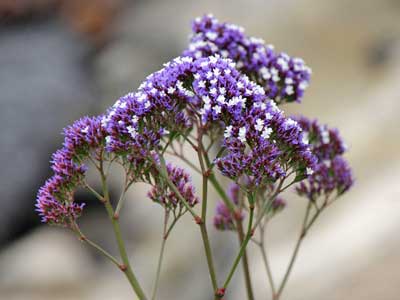
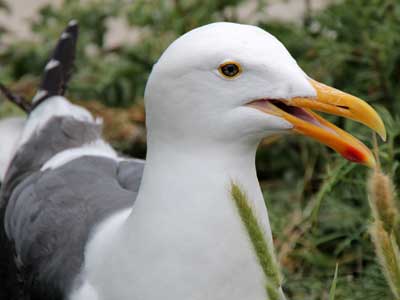

A nesting gull
The walkway overlooked a large colony of nesting cormorants.


Cormorants (from Latin words meaning sea raven) eat fish which they catch by plunging quickly down from the water’s surface and swimming underwater. They propel themselves with their wide, webbed feet and relatively short wings, which are great for underwater movement but require a lot more energy for flight.
Unlike many waterbirds that are waterproof, cormorants are more... water resistant. While they do have a preen gland that produces some oil which prevents their feathers from becoming completely waterlogged, they must also spend time drying them out after swimming, usually perched somewhere, holding their wings spread wide open.



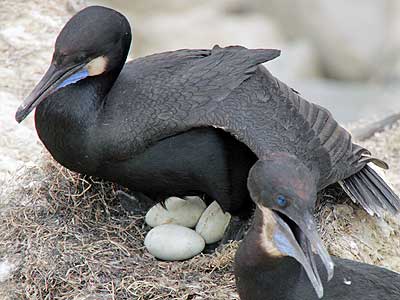
Brandt’s Cormorant (in honor of Johann Friedrich von Brandt, a German zoologist in the 1800s) is the largest cormorant on the Pacific coast. It can dive over 200 feet deep. While rather plain most of the year, during the breeding season it gets vivid blue eyes and gular skin, as well as white neck feathers.

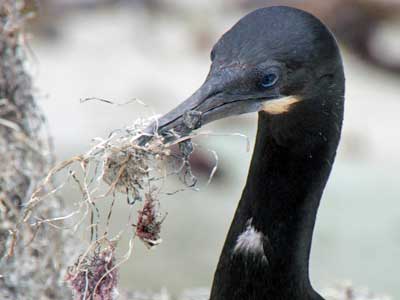
Gathering materials for the nest
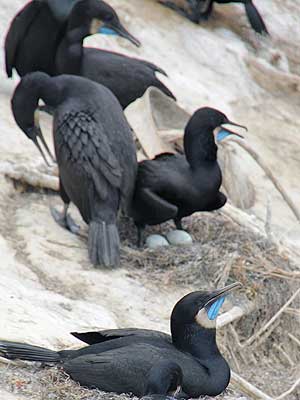



This isn't an egg, it's a baby cormorant!


Some larger, probably juvenille birds
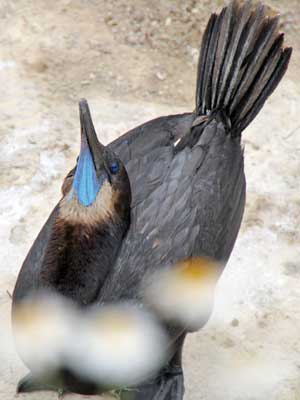

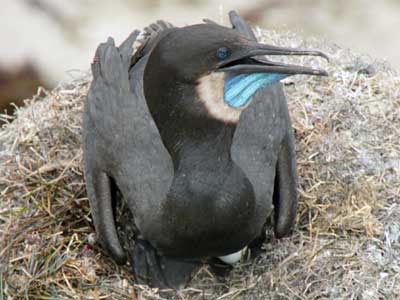

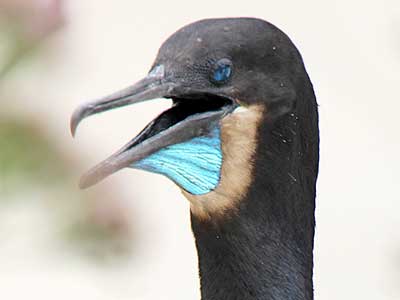



These cormorants look like mafia discussing how to dispose of the sea lion bodies! ... Another sweet hug.


Oh, the drama! ... And even a neighbor gets into the act.


Woe is everyone!


Who can be the loudest and most melodramatic?!


Finally things end on non-speaking terms.

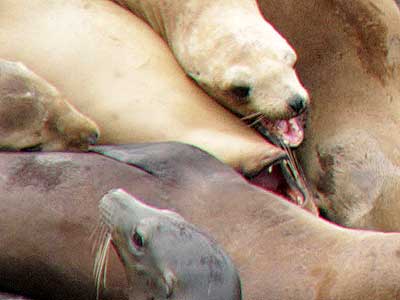
Even the babies are learning the act at a young age.




A sea cave ... Along with the resounding echos of barking sea lions, some divers also paddled about in the cave.




Quite the penthouse home!
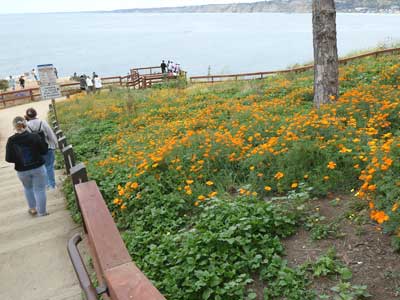

A large field of California Poppies ... and tourists who can't read.




Nearby were more orange flowers (possibly geraniums?)
return • continue

